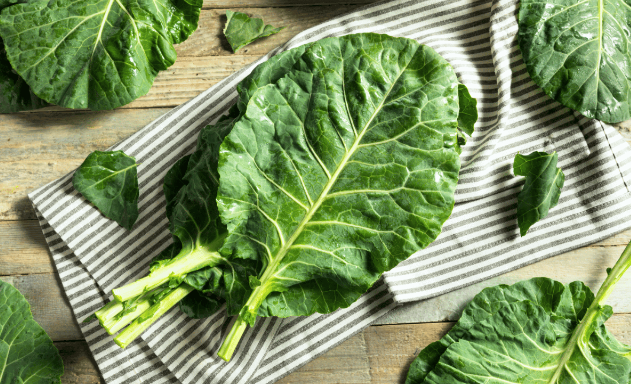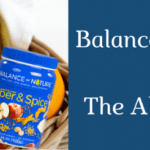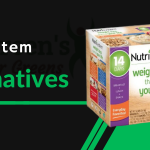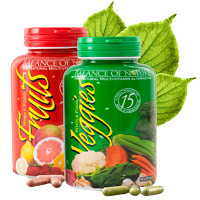Collard greens, with their foliage and earthy flavor, are widely respected for their benefits. As the spring season rolls in, these vibrant greens are among the veggies to thrive in my garden. I love using them in various dishes like soups and stir-fries. Let’s explore their health perks further and share some tricks on making this versatile leafy green appealing to those who’re quite selective with their food choices, including kids.
The Amazing Benefits of Collard Greens

Understanding Collard Greens
Collard greens often get hailed as a choice when it comes to greens. Getting kids to enjoy collards might pose a challenge. We’ll touch on that later. Collards, along with greens, serve as great sources of calcium for individuals who steer clear of dairy products. However, their benefits extend beyond providing calcium.
Belonging to the vegetable family known as “brassica,” collards stand alongside broccoli, cauliflower, bok choy, and Brussels sprouts. Additionally, radishes, turnips, and horseradish also fall under the brassica category.
One significant compound present in collards and other brassica veggies is sulforaphane—a substance that aids in detoxification processes. Sulforaphane has been associated with inflammatory effects, hormonal equilibrium maintenance, and shielding against chronic ailments. Collard greens are highly sought-after. Can even be found in form due to their popularity. While broccoli sprouts are known as the source of sulforaphane, collards also provide this beneficial nutrient.
What Makes Collard Greens Beneficial for Your Health?
Collard greens offer a way to incorporate phytonutrients into a carbohydrate diet. The majority of their carbs come from fiber, which is not fully digested but plays a role in maintaining a healthy gut.
Nutritional Value of Collard Greens
Collard greens have a profile packed with vitamins essential for overall well-being. They are notably high in vitamin A, with one cup exceeding 300% of the recommended intake. Moreover, they contain amounts of vitamin C (providing over 50% of the DV) and around 44% of the recommended daily intake of folate. It’s important to mention that collard greens contain folate as opposed to folic acid produced in labs.
In addition, kale, mustard greens, and Swiss chard collard greens are considered sources of vitamin K1. Enjoying a serving of collard greens provides 836 mcg of vitamin K1—an impressive 1,045% of the recommended daily intake. Additionally, collard greens contain minerals such as potassium, manganese, calcium, magnesium, and phosphorus that promote bone health, muscle function, and overall well-being.
The diverse range of vitamins, minerals, and nutrients found in collard greens makes them incredibly beneficial for our health. Their positive effects benefit systems including the circulatory system, digestive system, and immune system.
6 Health Advantages of Collard Greens
Collard greens offer support for overall health. Here are six ways, backed by research, that show how they can enhance your well-being:
Improving Heart Health
Collards provide nutrients that’re advantageous for metabolic syndrome and can lower the risk of heart disease. The fiber and potassium content in collards help regulate blood pressure and blood sugar levels, which can reduce the likelihood of heart attacks, strokes, and type 2 diabetes.
Anti-cancer properties
- Collard greens are packed with vitamins A (beta carotene) and C, which support the body. A robust immune response is crucial to safeguarding the body against cancer.
- Collard greens are packed with glucosinolates and sulforaphane, which have been researched for their potential to combat cancer.
- Glucosinolates transform into isothiocyanate (ITC), offering protection to cells, against cancer causing harm. Adding greens like collards to your meals has been proven to lower the chances of cancers, such as prostate, breast, skin, bladder, oral, and colon cancers.
Supporting Bone Strength
Collard greens contain Vitamin K1 that works alongside Vitamin K2 from animal products to maintain bones. Vitamin K assists in calcium absorption. Reduces the risk of fractures. The blend of calcium, vitamin K, and vitamin D from both plant-based and animal-based sources helps prevent osteoporosis.
Promoting Healthy Eyes
Rich in beta-carotene (vitamin A) and lutein, collard greens contribute to preserving good eyesight. Consuming leafy greens like collards can decrease the likelihood of age-related macular degeneration.
Anti Benefits
Certain compounds found in collard greens possess inflammatory properties. Introducing collards into your diet regularly may offer relief for conditions, like arthritis and other inflammatory ailments. The antioxidants found in collard greens, such as lutein, carotenoids, and zeaxanthin, help fight off radicals and reduce stress in the body, leading to decreased inflammation.
Supporting Digestive Health
The fiber content present in leafy greens promotes a gut microbiome, which is beneficial for digestive health. This can aid in bowel movements. Prevent constipation. Furthermore, scientists have identified a sugar known as sulfoquinovose (SQ) in leafy vegetables like collard greens. This sugar serves as a nourishing source for gut bacteria, assisting in the digestion process.
Who Should Avoid Collard Greens?
Although collard greens offer health benefits, caution is advised for individuals taking blood thinning medications like Warfarin.
Due to their high vitamin K levels (known as Koagulationsvitamin), collard greens support blood clotting, which can be helpful in preventing bleeding from injuries. However, this might interfere with the effectiveness of blood thinning medications. It’s crucial to discuss any plans for increasing your leafy green intake with your healthcare provider.
In some cases, food allergy tests may identify collard greens as an allergen. If this happens, it is recommended to avoid consuming them until your immune system is back in balance. Typically, collard greens do not have any effects unless consumed in large amounts. Overindulging in fiber from collard greens may cause bloating and digestive issues. It’s best to stick to one or two servings per meal.
Concerning Oxalates
Some people might wonder about the content of collard greens. Oxalates are compounds in plants that could potentially be problematic if your gut bacteria cannot break them down effectively. Compared to spinach, kale, and other leafy greens, collard greens actually have levels of oxalates. For individuals managing conditions like hypothyroidism or kidney stones and needing to limit oxalate intake, choosing collards could be an option.
Incorporating Collard Greens Into Your Diet
When buying collard greens, look for leaves that’re dark green, without any signs of damage or wilting. The freshest ones are usually those recently picked from the garden. These leafy greens are versatile. Can be used in dishes. While you can sauté them with oil and garlic for a stovetop dish, there are plenty of other ways to add collard greens to your cooking repertoire.
You could do fine. Shred the greens to use as a base for salads. To make the leaves softer, gently massage them with a mix of olive oil and lemon juice, a method used for kale. This approach allows you to swap collard greens for kale in recipes. Besides, you can incorporate collards into soups, stews, or broths to boost both the content and the unique flavor of the dish. Think about trying collard greens of kale in a delicious Sweet Potato Zuppa Toscana recipe.
If you’re looking for an alternative to tortillas or wraps, blanched collard leaves can be an excellent replacement. Fill them with your ingredients, like hummus, veggies, and protein choices. Raw collard greens are also popular in raw food diets when used as wraps. Another idea is substituting chard with collards in a chard-wrapped salmon recipe. You can also make stuffed collard greens by filling blanched leaves with a mixture of grains, beans, and spices, then rolling them up and baking or steaming until they’re tender.
For a tender result, slow-cook collard greens with broth, onions, and your preferred seasonings. Adding a sprinkle of red pepper flakes can give your dish a spicy kick. In the South of the United States, collard greens are a side dish often prepared with bacon fat, garlic, and smoked pork to enhance their flavor.
To make your smoothies more nutritious, consider adding collard greens to the mix. They pair nicely with fruits and other greens, like spinach. Use a blender to ensure these hearty leaves are well incorporated.
Whether you decide to cook them or enjoy them raw, collard greens offer a flavor and texture that can complement a variety of meals.
![Organifi Green Juice Reviews [USA] – Best Superfood Drink](https://mygreensdaily.com/wp-content/uploads/2020/04/organifi-new-featured-150x150.png)












